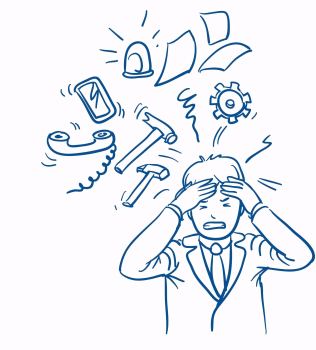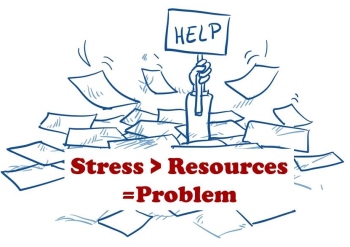The Stress Management Myth
Posted on

Stress is a growing problem for many employers, and the Stress Management industry is growing to keep pace. But trying to manage stress can create problems of its own.
Because managing requires us to do something different, and we don’t always do what’s good for us. We know that taking time out to exercise, prioritise, breathe, or be more present can be good for us – but we don’t always do it. Life gets in the way, particularly when we’re stressed.
So the stress tends to follow a cycle (very similar to Yo-Yo dieting): It gets unpleasant, so the person takes action. They start to feel better, so the action they were taking tails off, and the stress builds back up again. And worse still, that can lead to feelings of guilt, inadequacy or failure, pushing the stress up further still. It’s not a long term solution.
But there’s more to stress than the ones which get in the way…. Every stress is a gap between what someone wants and how it is. Many of those gaps will directly affect your business performance – the unhappy customer, the Quality issue, the looming deadline.
Stress becomes a problem only when the total amount of stress someone’s experiencing (including all those from outside the workplace) exceeds the resources they feel they have for dealing with it.

Below that threshold, the stress is presented by the challenges your people rise to, and gaps they’re motivated to close - like satisfying the difficult customer, or solving the unforeseen problem….. It’s in this zone that you get the very best from your people.
So a powerful alternative to trying to manage stress, is to embed the skills to change a problem stress inside the thinking, increasing the inner resources, and increasing the amount of stress an individual’s able to experience without it becoming a problem. And once those skills are embedded, they happen all by themselves, without having to do anything differently. That stress stays useful.
The more stresses someone’s experiencing, the more likely their day-to-day stress peaks will edge into the problem zone. Little things start to become a big deal, and it can become overwhelming. So it’s powerful to keep recognising the good stresses – the ones which motivate action; because acting to resolve any of the stresses (even if they’re not the biggest or most disruptive) drops the background level, making it easier to stay in the useful zone. It maintains the feeling of control.
Certain stresses can rocket straight into the problem zone, even when the background level is low. This often causes the individual to avoid the source of the stress, which can have significant implications for your business. I’ve supported clients who’d refused promotion to avoid presenting, resigned to avoid air travel, and kept quiet even when they’d spotted huge flaws in a plan, for fear of speaking up in meetings.
Many people assume that the only way to overcome those peak stresses is bit by bit, by experience. But it’s simply not true – because it’s not the situation itself that the person’s scared of or stressed by, but the way it shows up in their thoughts (that’s why just thinking about it is stressful). So the most effective place to change it is inside the thinking. Switching off the discomfort by increasing the inner resources, and bringing the stress straight back into the useful zone. It can take minutes - so there’s nothing left to manage….
The alternative to managing is powerful. Increase the inner resources, and there’s no need to keep finding time, energy or effort for doing things differently on the outside.

Add a comment: